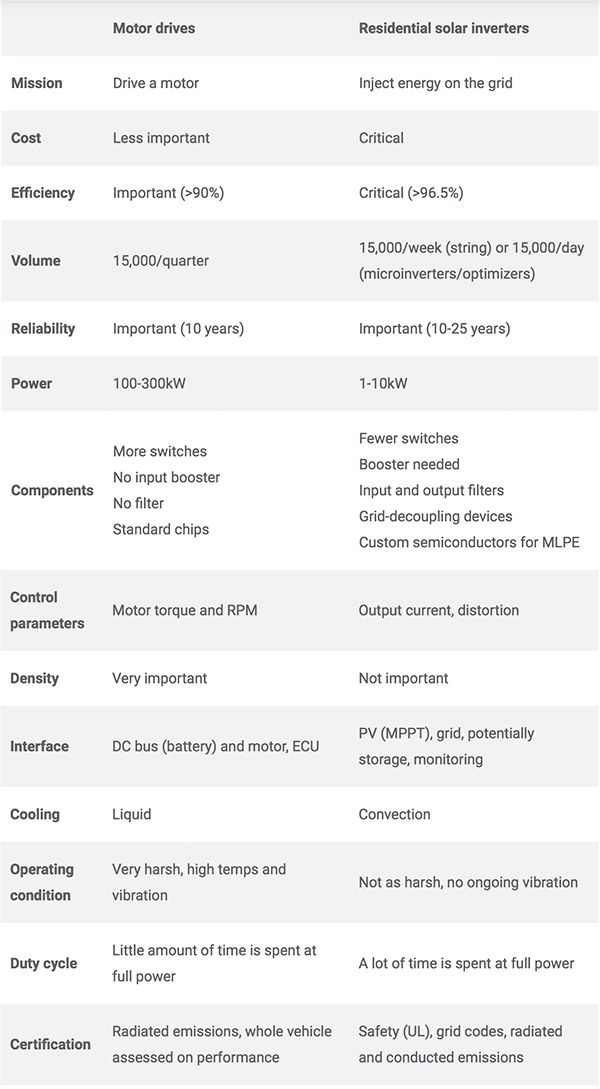With recent news about the potential Tesla Motors takeover of SolarCity, there’s been a lot of discussion about whether the company will design and manufacture inverters as part of the vertical integration strategy. Business strategy aside, it’s raised a number of questions about how similar or different inverters for solar-plus-storage are compared to inverters for electric vehicles.
I’d argue that they are different enough that having motor drive expertise creates little or no advantage, and the engineering expertise required to pull this off means that a whole new team will be required, regardless of whether they go for a string, string with optimizer, or certainly for a microinverter topology.
The most fundamental difference is in the mission of the two inverters: The mission of a motor drive is, simply, to drive a motor; a solar inverter’s mission is to drive a component of the grid, so it needs filters to make sure the current is clean.
These different missions drive a different component set that leads to fundamentally different design. An EV has six or more switches (insulated-gate bipolar transistors or IGBTs), many hundreds of amps of input current, and a relatively simple controller. A solar inverter is more complex, despite having fewer IGBTs and lower amperage input; it needs boosters and filters and that changes the underlying design. An overview of some of the other differences in the table below shows that it’s not a simple case of expertise in one type of inverter translating seamlessly into expertise in the other.

It’s an exciting time to be in the inverter industry. The emergence of storage and the advent of various energy management technologies are creating the need for even smarter systems of systems, and the inverter is central to this energy solution’s success. Doing it well is no small feat, and it will be interesting to see how the inverter world grows as EVs are added to the mix.
***
Martin Fornage is the chief technology officer of Enphase Energy. This piece was originally published on the Enphase blog.



